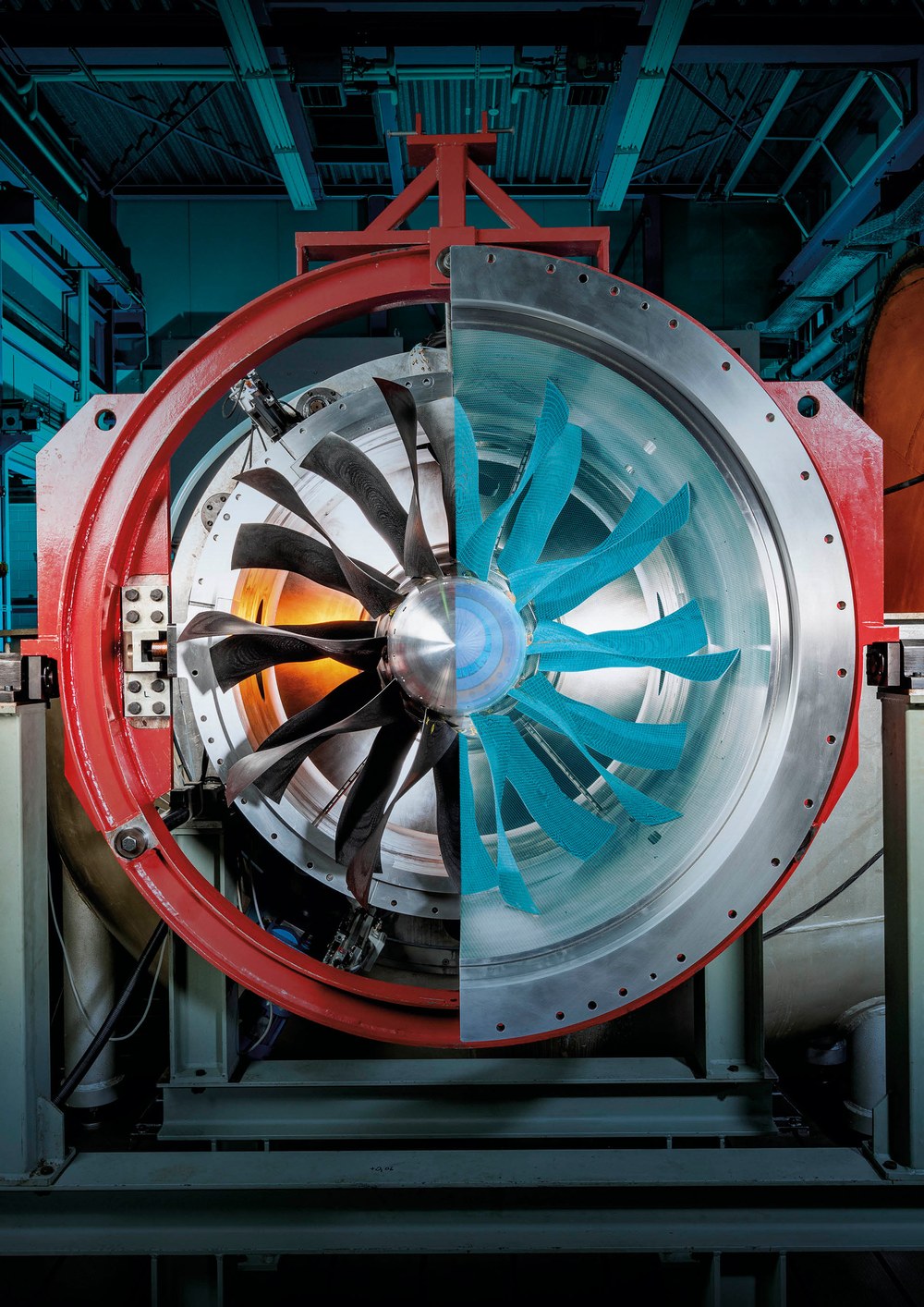DLRmagazine 170 – Compute before flight

Modern engines should be as quiet and emission-free as possible without compromising on power. For decades, this has been the focus of DLR's aeronautics research institutes, who have been working on developing better engines and testing them using various test benches. But for some time now, there have been new components to this research – simulations and digital models. These innovations allow researchers to digitally test new concepts in advance without the need for costly prototypes, speeding up the development of new engine designs. In this issue, DLR researchers Stanislaus Reitenbach from the Institute of Propulsion Technology and Kai Becker from the Institute of Test and Simulation for Gas Turbines talk about the role that the virtual engine could play in the future.
It is not just engines that are being digitalised. In Hamburg-Finkenwerder, a factory is being built that takes up almost no space – because it is digital. Here, DLR researchers are working with industrial partners to investigate and evaluate new concepts and technologies for aircraft design, components and production.
In the area of aerospace medicine, a very special mission is poised for launch this summer. Two mannequins modelled on the female body are scheduled to fly towards the Moon on board NASA's uncrewed Artemis I mission. The MARE experiment will measure radiation exposure during this flight. Through the Artemis programme, the first woman will travel to the Moon. Since the number of female astronauts is set to increase in the future, there is a great demand for data on the impact of spaceflight and microgravity on the female body.
Spaceflight is not the only thing that can have undesirable effects on the body; long-term stays in microgravity can also impact human health. For this reason, regular bedrest studies have been carried out at the DLR site in Cologne since 1988 involving both female and male participants who remain in a tilted, head-down position for extended periods. This edition of the DLRmagazine contains an overview of the bedrest studies conducted in recent years.
And for those who long for some sunshine, the article on the Évora Molten Salt Platform takes you on a trip to Portugal, where DLR is operating a parabolic trough test facility using molten salt.

